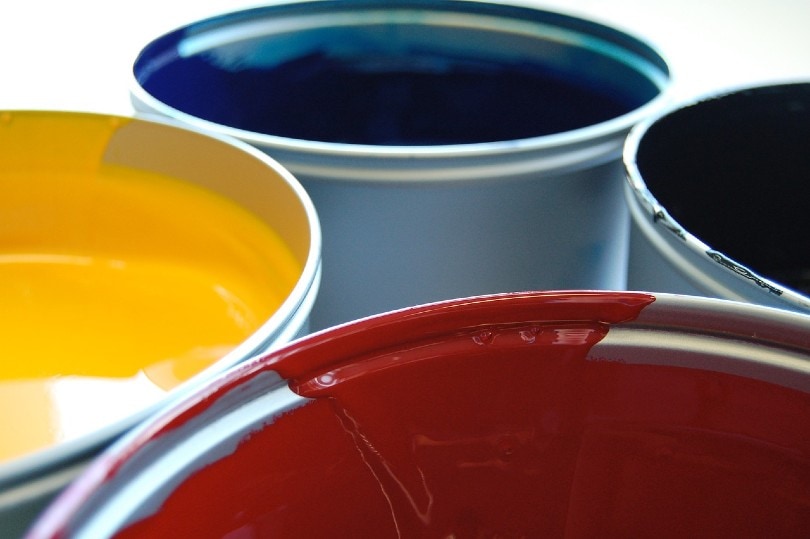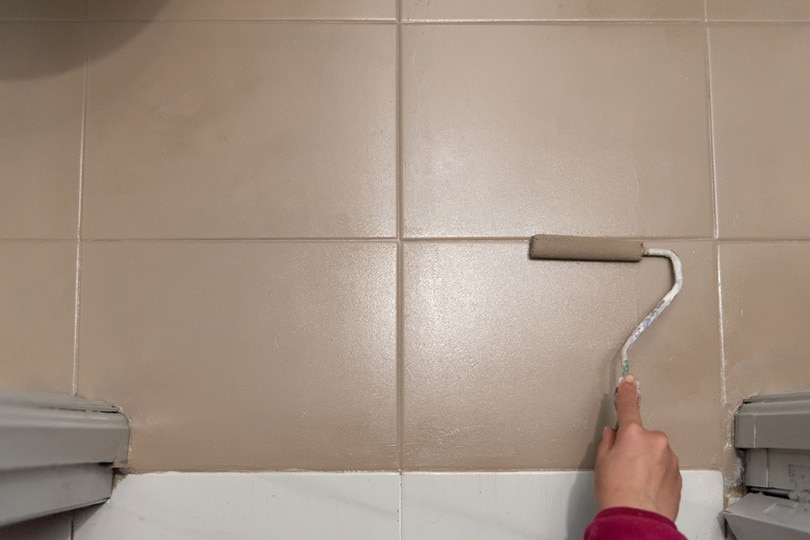How to Paint Metal in 5 Easy Steps
-
Pete Ortiz
- Last updated:

Even if you are a routine crafter or DIYer, painting metal is no easy task. Metal is different from other painting surfaces because the paint doesn’t stick to the material easily. Plus, metal is damaged differently from other materials, which can make prep confusing.
Because of how difficult it is to paint metal effectively you have to know what to do and what materials to look for. You’ll want to select paint specifically designed for metal, but you also have to prep the metal before you start painting it so that the paint sticks correctly.
To learn how to paint metal in five easy steps, keep reading.
Project Overview
| Working Time: | 3–5 hours |
| Total Time: | 2 days |
| Experience: | Beginner |
| Cost: | $20–$50 |
Keep Yourself Safe
Before you dive into painting metal, it’s important to keep yourself safe. Working with metal puts you at risk of inhaling fine metal particles or damaging your eyes. You’ll want to use a dust mask, protective goggles, and gloves during the process. If you are using a rotary tool during the scuffing process, you’ll want to invest in ear protection as well, such as earplugs.

What You’ll Need
Tools
- Dusk mask/respirator
- Googles
- Gloves
- Earplugs
- Shoop rags
- Scuffing pads
- Wire brush
- Wire brush attachment for drill (if needed)
- Paintbrush
- Drop cloth
Materials
- Drop cloth
- Rust remover (if needed)
- Paint
- Acetone
- Rust remover
- Mineral spirits
A Note on Preparations
Because of the challenges that come with painting metal, you must prep the material first. Prepping the metal includes removing old paint, as well as cleaning off any rust, debris, and grease. Then, scuff up the surface so that the primer and paint can actually stick to the metal.
Once the metal is thoroughly cleaned and scuffed, the prepping is not over yet. You also have to prime the metal. Primer cannot be ignored if you want the paint to stick properly. We will go over these preparation steps below in more detail, but we wanted to emphasize their importance.
In fact, prepping the metal is just as important as the actual painting job. If you fail to take the prep steps seriously, the paint will not stick properly, and the paint job will look shoddy and peel off of the metal over time.
Instructions – The 5 Easy Steps to Paint Metal
1. Remove Old Paint, Rust, and Debris

To begin painting metal, you have to prep the metal first. This involves removing any old paint, rust, and debris stuck to the metal. To kick off the process, add a drop cloth underneath the metal. This will help catch any falling debris or paint.
Remove the old paint and any rust by using a wire brush to remove any of the loose or flaking paint. If you’re having trouble removing all of the surfaces with a handheld brush, you can attach a wire brush to the top of your drill or rotary tool.
If the metal is severely damaged with rust, you will need to soak it first in a rust remover. Follow the instructions of the rust remover to thoroughly clean the area.
After you have removed the old paint and rust, dampen a cloth and wipe the metal piece down. This will help to remove any dirt or mud caked onto the metal. Follow this step by wiping down the metal with an acetone-soaked rag. The acetone will remove any grease. Let it dry before moving on to step two.
During this step, be very careful about how much water you are using. Water does not effectively clean metal. The only water that should touch your metal at this point is in the dampened rag. Only use a rag dampened with water before using a rag dampened with acetone for best results.
2. Scuff the Metal
After the acetone dries, you’ll need to scuff the metal using a scuffing pad. The purpose of scuffing the metal is to create small etches in the metal’s surface that the primer can stick or cling to. You don’t need to scuff up the metal severely or damage it. The small etches naturally made on the metal are enough to render the primer effective.
3. Prime the Metal

Now that there are small etches on the metal surface, you can apply a primer to the metal. You will want to select a metal primer specific to your needs.
For example, you should select a zinc chromate primer if you could not remove all of the rust from step one. This primer is designed for coating rust. Even if you think you removed all the rust, this is the best primer to select for metal because it ensures the primer sticks, even if there is rust you looked over.
After you add the zinc chromate primer, add another layer of self-etching primer for metal. Carefully read the instructions to make sure that the primer you select is suitable for metal. Additionally, the primer must be compatible with the paint you intend to use, whether it be oil-based or water-based.
Allow the primer to dry before applying any paint. The primer dry time will depend on the brand. So, read the instructions thoroughly to learn about the drying and cure times for your specific primer. If your metal piece will be located outside, add a second layer of primer after the first coat dries.
4. Paint the Metal
After the primer has thoroughly dried, it is time to finally paint your metal. You can paint metal with an oil-based or water-based paint. You will also have the choice to use spray paint or a bucket of paint that you hand brush onto the metal.
Spray paint is advantageous because it is very easy to apply and takes less time to finish the job. However, hand-painted metal has a more durable finish. Likewise, hand-painted metal is a good choice if you’re using oil paints since they dry smoothly. If you are planning to put the metal outside, it’s best to hand paint the metal as a result, but, it’s up to you to decide which paint method you select.
The painting steps will depend on the type of paint you select. Here is how to paint the metal using acrylic, water-based spray paint:
- Shake the spray paint can several times. This mixes the paint.
- Stand 6 to 12 inches away from the metal.
- Spray the metal piece while you are moving the can in long sweeping motions. Do not hold the sprayer over one spot for too long because this will result in pooling.
- If there is excessive dripping or pooling, wipe the affected area, backup, and start over again.
- Apply three thin coats of spray paint using these methods but allow each layer to dry before adding another layer.
If you need the most durable finish, hand paint oil-based paint onto the metal. Hand painting is more durable simply because the layers can be thicker than with spray paint. This is what you will need to do to hand paint the metal with oil-based paint:
- Read the manufacturers’ instructions to mix the paint correctly.
- If the paint is too thick, add mineral spirits.
- Apply one or two thin layers of paint using a natural bristle brush.
5. Let the Paint Cure

Finally, the last thing you need to do is allow the paint to cure or dry. Most metal paint needs to cure for 36 to 48 hours before you touch it. Ensure that the metal is placed in a protected area where extreme temperatures and weather changes do not affect the drying process.
Related Read: How to Paint Plastic in 7 Easy Steps (With Pictures)
 Final Thoughts
Final Thoughts
Even though painting metal is more difficult than painting other materials, it is a lot easier than you think. As long as you select the right materials and prep the metal before applying your layers of paint, the paint job should come out professional-looking and durable.
If there is a significant amount of rust that covers a large portion of the metal, you might want to consider calling a professional. However, this is not needed in scenarios where only small pieces of metal need to be painted.
- See Also: How to Paint a Metal Front Door
Featured Image Credit: zivica, Pixabay
Contents



